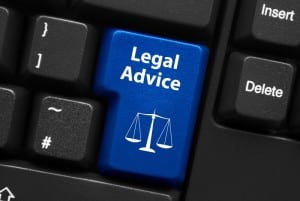What is the difference between a Copyright, Trademark and a Patent?
 A Trademark
A Trademark
protects names, terms and symbols that are used to identify the source of goods and/or services on the market. In other words, a trademark lets the consumer distinguish one company’s offerings from another’s. Trademarks include brand names such as “Coca-Cola” and images such as Nike’s famous “swoosh.” As the owner of a federally registered trademark, you can sue for trademark infringement in federal court and prevent the importation of foreign goods that display your trademark. A service mark is a word, phrase, symbol, and/or design that identifies and distinguishes the source of a service rather than goods. The term “trademark” is often used to refer to both trademarks and service marks.
A Copyright
protects original creative works such as books, movies, songs, paintings, photographs, web content and choreography. As the owner of a federally registered copyright, you can control how your work is reproduced, distributed and presented publicly, and you can sue infringers in federal court and prevent others from importing infringing goods
A Patent
is a limited duration property right relating to an invention, granted by the United States Patent and Trademark Office in exchange for public disclosure of the invention.
The choice between registering a trademark and a copyright is not always a clear one. Trademark and copyright registration are both means of protecting your intellectual property rights. There are, however, important differences between trademark and copyright protection.
Copyrights protect “original works of authorship,” including literary, dramatic, musical, artistic, and certain other creative works. Copyright does not cover intellectual property such as titles, names, short phrases, and slogans; familiar symbols or designs; or mere variations of typographic ornamentation, lettering, or coloring. This type of intangible property is often more appropriately protected by a trademark. Think of memorable advertising slogans you have heard. Chances are these slogans are protected by a trademark of some sort, while they are unlikely to qualify for copyright protection. Some things, such as more complex logos, may qualify for both trademark and copyright protection. This is because the amount of original authorship in a logo can vary greatly. To protect the name of your company, your newly designed name, logo or a catchphrase, a trademark is probably what you need. To protect your latest painting, the next great American novel or even a brilliantly choreographed dance sequence, a copyright is probably the best route for you.
I have invented it…Now What do I do? Can I copyright or trademark my website? Domain Name? Software Program?
Copyright law does not protect domain names but the original authorship appearing on a website may be protected by copyright. This includes writings, artwork, photographs, and other forms of authorship protected by copyright. Procedures for registering the contents of a website may be found in Circular 66, Copyright Registration for Online Works. As for my software program…the next hottest ticket item that you may want to protect…. Traditionally, the most common route of software protection has been copyright. However, in the cyberspace era, this type of protection may be less than adequate. Software patents are becoming more popular; it is worth examining which form of protection is most sensible for your program. Unfortunately, the interpretation of copyright law as applied to software has not yet reached a point of consistency, and the protection provided by copyright is relatively weak. Under copyright law, software is regarded as a “literary work”. Obviously, copying a literary work verbatim is plagiarism (“infringement”), but the courts also view non-literal copying as infringement. If two works are not “substantially similar” in embodiment, then there is no infringement. Applying this vague rule to software is hindered by the lack of technical expertise amongst the legal community (e.g., an inability on the part of a judge to understand a program language), and a lack of clear definitions as they pertain to software.
Patenting is becoming the method of choice for effective protection of original computer programs. Whereas a copyright protects an original work in the tangible fixed form in which it has been set down, a patent protects the creation of inventive concepts as well as their reduction to practice. A patent owner has the right to keep others from making, selling, or using a patented invention for twenty years from the filing date of the patent application. In order to meet patentability criteria, an idea must be novel, useful and non-obvious to one of “ordinary skill” in the field of the invention. Patents fall into three main classes, utility, design and plant. An invention subject to a utility patent must fall into one of the following categories: machine, article of manufacture, process, or composition of matter.
The trend in patenting software is apparent by querying the U.S. Patent Office’s Patent Database with the keyword “software.” Just over one thousand software patents were issued in 1993 and 1994. In 1997 and 1998, over three thousand software patents were issued. This said, it is not exactly straightforward to win a patent for a software program. In software, determining non-obviousness is difficult, for in such a young field it is difficult to determine what the appropriate level of ordinary skill actually is. Evaluating prior art is also complicated, because the prior art in software is often not documented in paper form. If you have questions about whether your invention, creative work or symbol requires copyright, trademark or patent protection or a combination thereof, please contact the Horton Law Group, P.A. at 561-299-0018 to speak to a qualified and experienced attorney who can further assist you with this matter.
Or you can download our copyright and trademark client questionnaires to complete in preparation for meeting with an Attorney at the Horton Law Group, P.A.
The Horton Law Group, P.A. will be proactive in an effort to protect your intellectual property from infringement or unauthorized use by registering your copyright with the United States Copyright Office or your trademark with the United States Patent and Trademark Office (PTO).
Copyright And Trademark Questioniares
Copyright Client Questionaire | Trademark Client Questionanire
Copyright & Trademark Infringement Litigation
 Whether you are a business or an individual, if you have introduced a brand, created a slogan, designed a logo or composed an artistic work, or if you have developed proprietary business knowledge, a new product, process or other innovation, you have a strong financial interest in protecting your intellectual property from unauthorized use. Trademark or copyright infringement may prevent you from obtaining all revenue your idea could generate. If your company has been the victim of infringement or has been accused of trademark infringement, we can help you.
Whether you are a business or an individual, if you have introduced a brand, created a slogan, designed a logo or composed an artistic work, or if you have developed proprietary business knowledge, a new product, process or other innovation, you have a strong financial interest in protecting your intellectual property from unauthorized use. Trademark or copyright infringement may prevent you from obtaining all revenue your idea could generate. If your company has been the victim of infringement or has been accused of trademark infringement, we can help you.
Trademarks help distinguish your company’s products or services from the competition. Your company should be concerned about trademark infringement. If another company uses a trademark that is the same or similar to that of your company, your company may lose profits. If you suspect a company is infringing your mark or if you are being accused of trademark infringement, we recommend that you contact an intellectual property attorney immediately. Please call the Horton Law Group, P.A. at 561-299-0018 for your free legal consultation.
In a trademark infringement lawsuit, a plaintiff has the burden of proving that the defendant’s use of a mark has created a likelihood-of-confusion about the origin of the plaintiff’s goods or services. The plaintiff has to show that it has a legal right in a trademark and that the defendant is using a confusingly similar mark creating a likelihood of confusion, mistake or deception with consumers. Courts generally consider the following likelihood of confusion factors when determining whether trademark infringement has occurred:
- the similarity in the overall impression created by the two marks;
- the similarities of the goods and services involved;
- the strength of the plaintiff’s mark;
- any evidence of actual confusion by consumers;
- the intent of the defendant in adopting its mark;
- the physical proximity of the goods in the retail marketplace; and
- the degree of care likely to be exercised by the consumer.
If your company has been the victim of infringement or has been accused of trademark infringement, the Horton Law Group, P.A. can help you. Please contact Attorney Sommer C. Horton at 561-299-0018 for your free legal consultation.
Copyright And Trademark Questioniares
Copyright Client Questionaire | Trademark Client Questionanire

